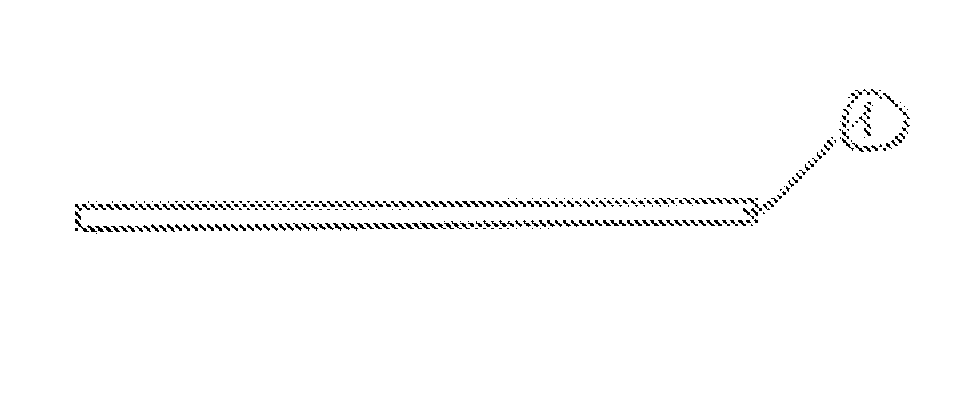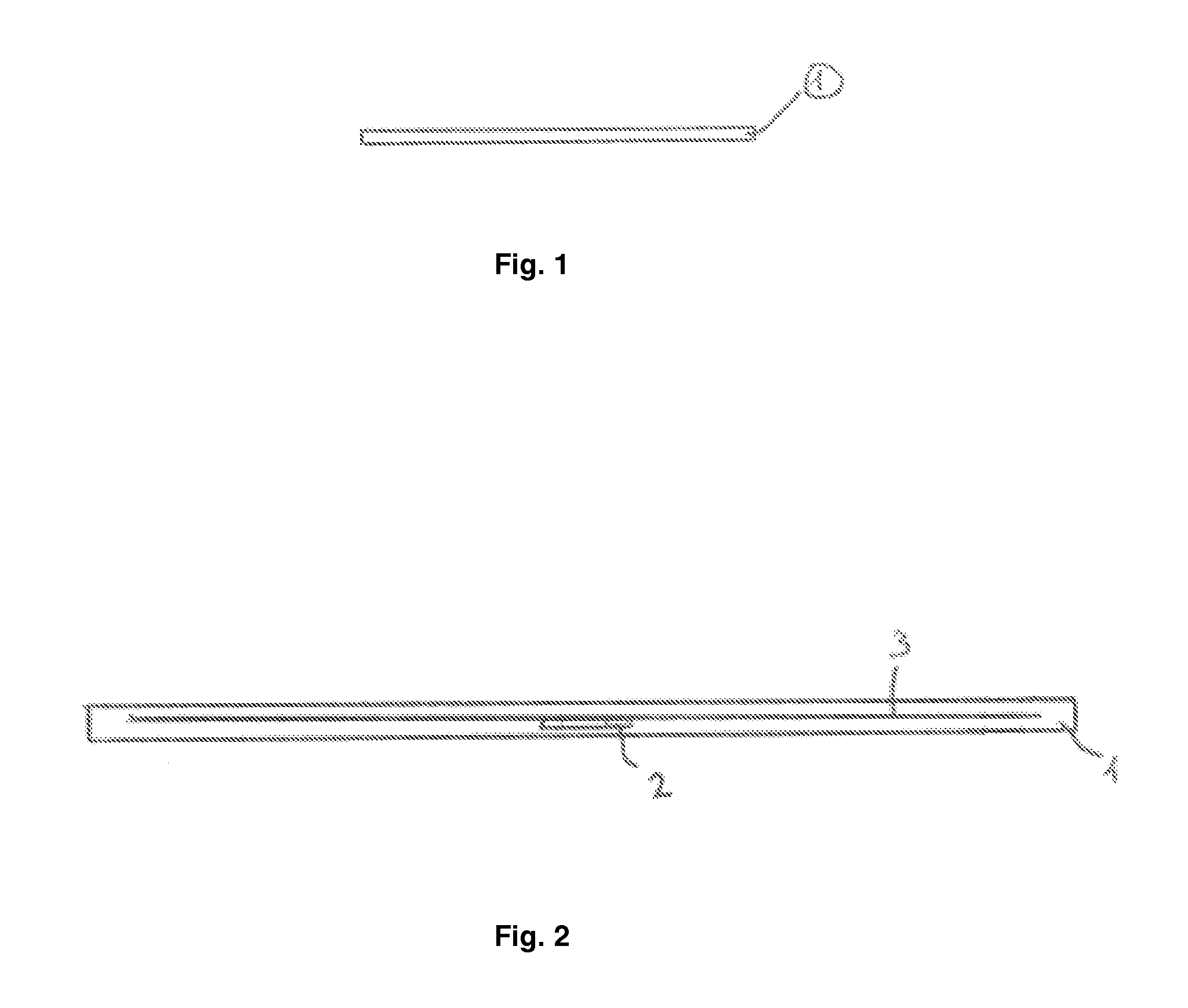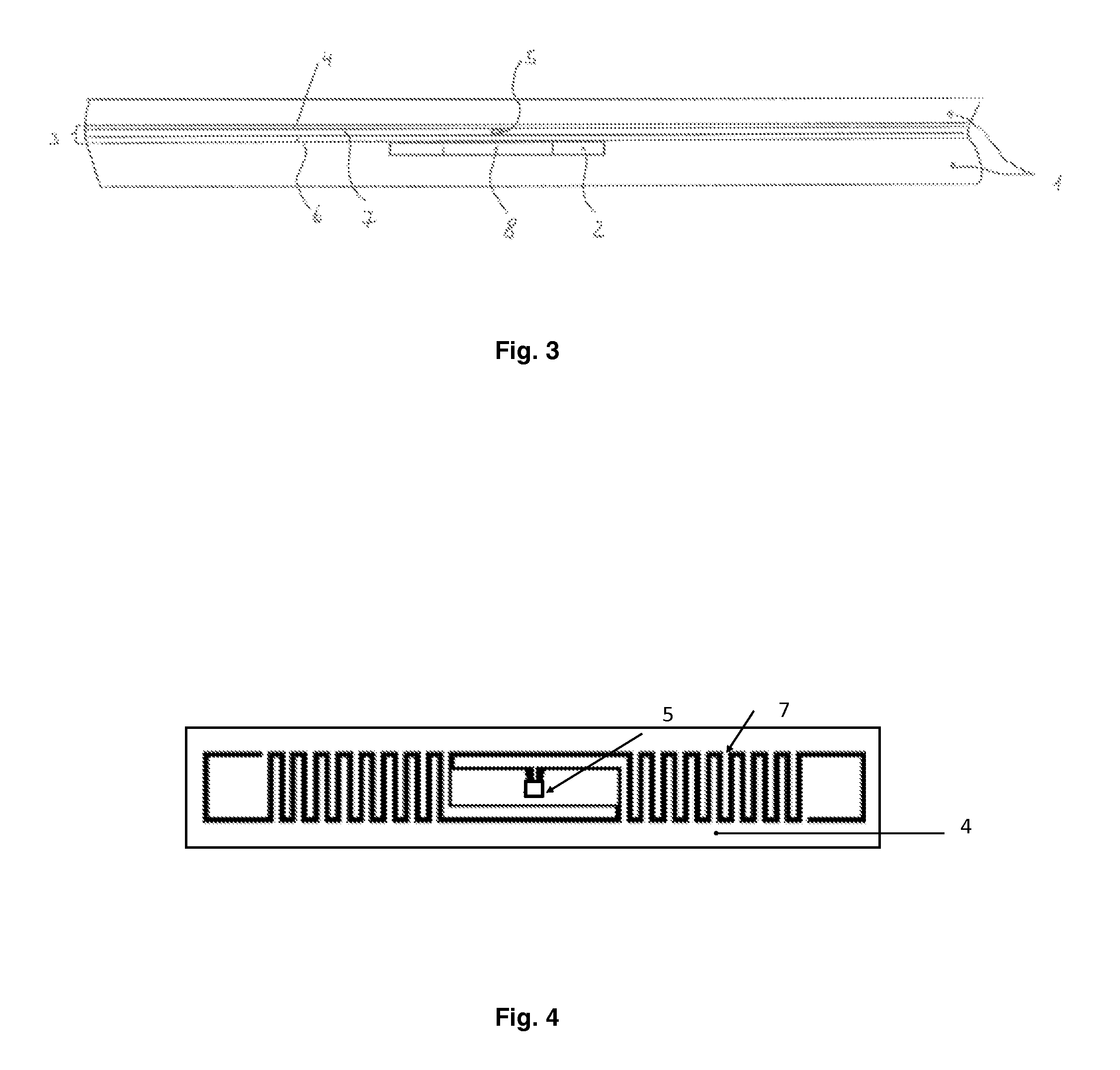Flexible tag
a technology of flexible rfid and tag, which is applied in the direction of antenna details, instruments, antennas, etc., can solve the problems of poor mechanical impact resistance of the tag, high cost and dirty, and the inability to handle a large quantity of soft adhesive material for high volume manufacturing
- Summary
- Abstract
- Description
- Claims
- Application Information
AI Technical Summary
Benefits of technology
Problems solved by technology
Method used
Image
Examples
Embodiment Construction
[0027]The invention will be better understood in light of the following description of example embodiments, and in reference to the figures. Same references will be used to designate same or similar features that appear in more than one figure.
[0028]Referring to FIG. 1, a flexible tag owes its flexible aspect to the material out of which it is made. This may for example be rubber that is obtained by mold injecting thermoplastic elastomer. This could in the alternative be any other flexible material such as silicone, TPU, . . . .
[0029]The flexible tag 1 typically is dimensioned to following lengths:[0030]length=55 mm;[0031]width=12 mm; and[0032]thickness=2 mm.
[0033]However different dimensions may be adopted depending on the actual requirements in the use for the flexible tag 1.
[0034]FIG. 2 illustrates a cross section of the flexible tag 1 in which in addition to the material out of which the flexible tag 1 is made, a flexible RFID inlay 3 embedded in flexible tag 1's material is sho...
PUM
| Property | Measurement | Unit |
|---|---|---|
| flexible | aaaaa | aaaaa |
| mechanical stress | aaaaa | aaaaa |
| softening point | aaaaa | aaaaa |
Abstract
Description
Claims
Application Information
 Login to View More
Login to View More - R&D
- Intellectual Property
- Life Sciences
- Materials
- Tech Scout
- Unparalleled Data Quality
- Higher Quality Content
- 60% Fewer Hallucinations
Browse by: Latest US Patents, China's latest patents, Technical Efficacy Thesaurus, Application Domain, Technology Topic, Popular Technical Reports.
© 2025 PatSnap. All rights reserved.Legal|Privacy policy|Modern Slavery Act Transparency Statement|Sitemap|About US| Contact US: help@patsnap.com



